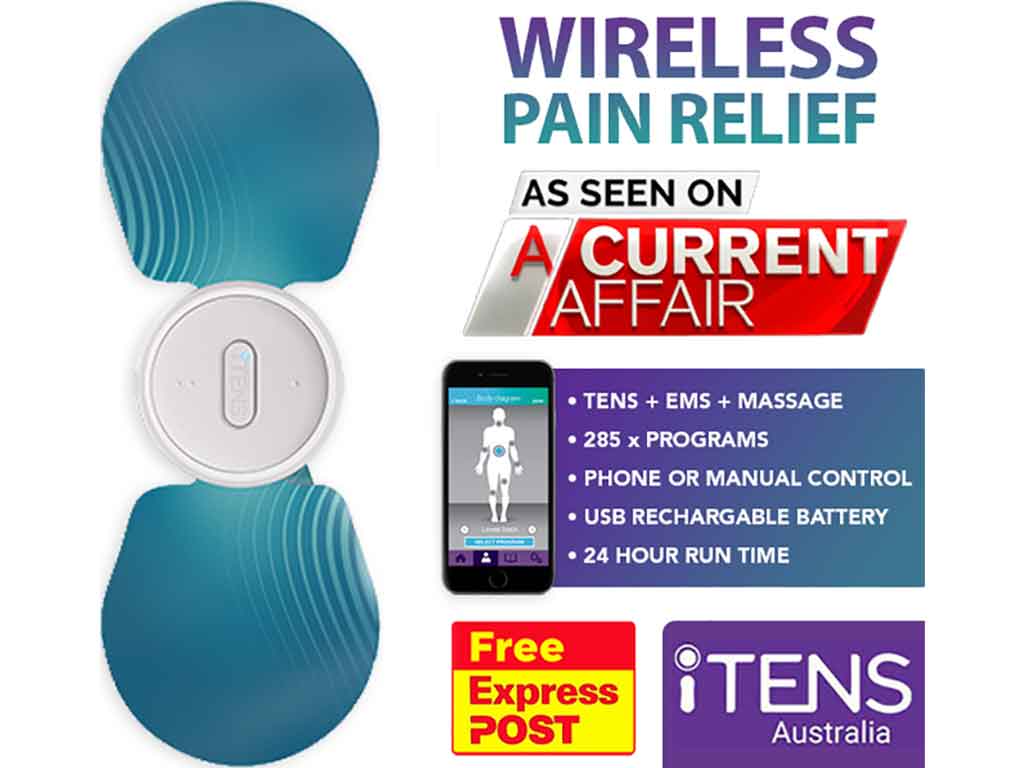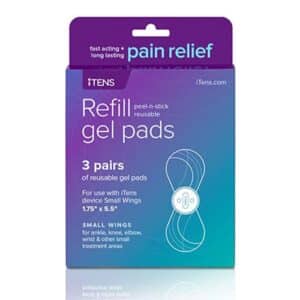
Transcutaneous Electrical Nerve Stimulation (TENS) is a method of pain relief that uses a battery-operated device with electrodes. A maternity TENS machine works by sending small electrical pulses through sticky pads placed on the skin. These gentle pulses help alleviate discomfort and provide relief during labour. The placement of the pads is crucial for effective pain management. They should be placed on the lower back, below the ribcage, and just above the buttocks.
Many women find childbirth physically demanding and painful. Therefore, they often seek methods to relieve labour pain. Traditional pain relief approaches like medications and breathing techniques are common. However, these methods may not always be enough. In such situations, TENS therapy serves as an additional pain relief option that can complement other treatment options. This article will provide more information about maternity TENS units, including their mechanism of action, benefits and proper pad placement.
How Does a Maternity TENS Machine Work?
A maternity TENS machine works by utilising electrical stimulation to help manage pain during labour. These electronic devices send electrical pulses through electrode pads placed on the skin. When turned on, the machine delivers these pulses, which travel through the nerves to disrupt the pain signal travelling to the brain. This interruption helps to decrease the pain of contractions.
Additionally, most maternity TENS unit includes a boost button that allows the user to increase the intensity of the electrical pulses. This extra surge of electrical stimulation can provide further relief during particularly intense labour contractions. By inhibiting the nerves responsible for transmitting pain signals, the TENS machine effectively reduces the discomfort associated with labour pains.
Moreover, the use of labour TENS machine can also stimulate the production of natural pain relievers, such as endorphins. These hormones are released by the body in response to the electrical stimulation, acting as a built-in pain relief mechanism. Furthermore, maternity TENS units remain safe and effective medical devices.
Frequencies and Intensities
- Frequencies indicate the number of electrical impulses per second, measured in Hertz (Hz). Low frequencies, which range from 1 to 10 Hz, trigger the release of endorphins. Conversely, high frequencies, ranging between 50 and 120 Hz, work to prevent pain signals from reaching the brain.
- On the other hand, the strength of the electrical impulses depends on the intensity level, which is measured in Milliamperes (mA). Individuals should adjust this intensity to a level that feels comfortable for them. They need to make sure it is strong enough so they can feel the impulses as a tingling or buzzing sensation.

Benefits of Using a Maternity TENS Machine
A maternity TENS machine offers several benefits to expectant mothers. Firstly, it is non-invasive. Unlike other interventions, TENS does not require puncturing the skin. It operates by sending gentle electrical pulses through electrode pads placed on the skin. Thus, anticipating mothers often prefer TENS as it poses minimal risk to both them and their babies.
Secondly, maternity TENS units provide drug-free relief during contractions. This is particularly appealing for women who prefer to avoid medications during labour. Thirdly, the health provider or birth partner can adjust the intensity and frequency of the electrical pulses according to the needs of the mother.
Lastly, maternity TENS devices are portable and easy to use. They are typically small, battery-powered machines that can be easily carried in a hospital bag or purse. Many models feature an LCD screen and a contraction timer, allowing mothers to track their progress during labour. The simplicity of operation makes it accessible for anyone, even without prior experience. Additionally, obstetric TENS machines often come with clear instructions for setup and use.
Is It Safe and Effective?
Research studies have shown that using maternity TENS can effectively reduce the intensity of labour pain. A study conducted by Henderson et al. (2011) involving 192 women found that those who used TENS during labour reported lower levels of pain compared to those who did not use TENS. Another study by Maimburg et al. (2010) corroborated these findings.
Moreover, maternity TENS is safe for both the mother and the baby. A study by Nelson et al. (2012) concluded that the use of TENS during labour did not have any adverse effects on the well-being of the baby.

Pad Placement When Using a Maternity TENS Machine
Proper pad placement is essential when using a maternity TENS machine. Users should position the electrodes correctly on the lower back. They should place one set below the ribcage and another set just above the buttocks. Additionally, it is important to position them on both sides of the spine with a gap of two to three inches between them.
Moreover, there are certain areas to avoid when placing the pads. Users should never put them directly over the abdomen, as this could potentially increase uterine contractions. Similarly, they should steer clear of areas near the head, neck, heart, and directly over the spine. Also, they should avoid areas with open wounds, infected skin, or decreased sensations.
When the pads no longer firmly stick despite moistening the gel, it is time to get a refill. The efficiency of the TENS electrodes or wings will diminish due to wear and tear. Getting a replacement wing is best as soon as the stimulation begins to weaken.
Safety Precautions
There are some important safety precautions to keep in mind when using a maternity TENS unit. For instance, it is crucial to talk to a doctor, especially if there are any medical conditions present. They can guide whether TENS is suitable and how to use it safely.
In addition, users have to use the right settings and make sure the electrode pads stick properly to the skin. It is important not to exceed the recommended limits to avoid discomfort or skin irritation. Moreover, keep the labour TENS devices away from water to prevent electric shock.
Conclusion
Maternity TENS machines offer expectant mothers a safe and effective way to manage labour pain without medication. By delivering gentle electrical pulses through electrode pads placed on the skin, these devices interrupt the pain signals travelling to the brain. Furthermore, TENS units stimulate the production of natural pain relievers, such as endorphins, enhancing their effectiveness. Their non-invasive nature, portability, customisable settings, and ease of use make them a preferred choice.
Proper pad placement is crucial when using a maternity TENS device. Placing the electrodes on the lower back, with one set below the ribcage and another above the buttocks, ensures effective stimulation. Avoiding areas like the abdomen, head, neck, and spine is essential to prevent any adverse effects. Furthermore, safety precautions, such as consulting a doctor, using the right settings, and keeping the device dry, help ensure a safe and comfortable experience.





















